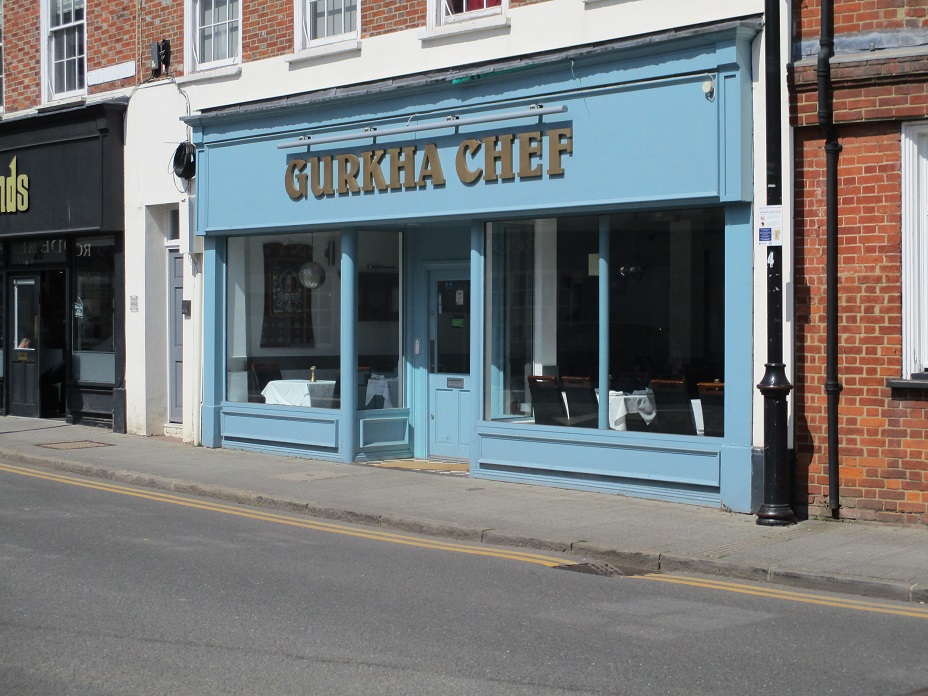The final day of our epic walk from Sandhurst (Gloucs) to Sandhurst (Berks); this section completed the line between all 3 Sandhursts – as last year we walked from Berkshire to Sandhurst in Kent.

Eversley Ford
Today’s 13 mile route would take us over very familiar territory.
We have been caching for over 6 years and we, like most cachers we guess, have found most of our caches close to home. Today’s route would pass through several series we had previously undertaken. It was therefore a little surprising we managed to attempt 13 caches that we had never attempted before!
As we left Swallowfield we noted that the village Firework Fiesta would be happening that evening. Our car was parked close to the main event… we needed to be finish our walk and return with our other car well before the fireworks started – otherwise we would be stuck in traffic!
Our first three caches were all on the Swallowfield boundary. The first, intriguingly titled ‘Twists, Turns and Flow’ and was under a bridge over the River Broadwater. With such a scary title we were a little concerned we may get wet, but a close examination of the bridge from the side, meant the retrieval was easy and dry!

Don’t drop the cache!
The River Broadwater is a small river and has two tributaries, the Whitewater and the Blackwater. Today’s walk would be following the River Blackwater all the way to Sandhurst.
Our next cache was a Church Micro at the nearby Swallowfield Church. The previous cacher had logged a DNF, but we found the cache quite easily. A small clip box, with a fine view of the Church. Our last cache in Swallowfield was adjacent to a large oak tree – another easy find.

Swallowfield Church
Pleased with our early successes we then had a 2-3 mile walk to another set of caches close to Eversley Ford.
On the way our path initially followed the River Broadwater quite closely, yet we somehow missed where the Blackwater and Whitewater merged, as we were too busy watching a horse and trap being exercised in an adjacent field!

Prior to Eversley Ford we arrived at Farley Ford. We had been to this spot twice before, once when we undertook the Hampshire Drive series (November 2016), and once when completed the Farley Forage series (August 2017). We desperately tried to remember some of the hides in the Farley Forage series, but we failed to re-find any of the caches based on our recall of the circuit.

Farley Ford…visited for the THIRD time on our caching travels!
We left the Farley Forage series, walked through several fields with horses until we arrived at lane leading to our next cache. Here the hint mentioned a ditch crossing. Once we found the correct ditch (fortunately dry), it was easy to locate the cache. In fact, it hadn’t been hidden that well, so we hid it slightly better.
Our walk so far had been North of the River Blackwater in Berkshire, At Eversley Ford we crossed into Hampshire, where an old county marker hosts a cache. The cache owner requests that the cache is moved ‘to the other county’ after each find. We moved it back to its proper place.. into the Royal County of Berkshire.

The Ford itself was busy – we paused for coffee. During our short stop we saw many a dog-walker, cyclist and rambler use the foot-crossing by the ford. The nearby Eversley Mill was a restaurant until a few years ago – sadly now closed.
After a short while the Hampshire footpath took us into the village of Eversley where a bus stop provided us with a straightforward find. (Readers may remember we struggled with the Silchester Bus Stop cache, so we really grateful for very explicit hint here !)

Our brief sortie into Hampshire was over and we re-crossed the river back into Berkshire, and followed in reverse the Finchampstead Undulations series. This stretch brought back happy memories as it was one of the first series we undertook way back in January 2013 (and one of our first blog entries too!). Of course we couldn’t remember where these caches were either, but we did recall having to jump across a stream to find a cache, but this looked impossible now as there was a wire-fence on the far side of the ditch.
We also remembered a very muddy path, yet ours was dry and the view the river had changed completely. Instead of a muddy grass field, hundred of trees had been planted. This will be quite a forest in years to come!

Future Forest of Tomorrow
The Finchampstead Undulation series has had a couple of changes over the years, notably the addition of a couple of extra caches. The first cleverly hidden close to the ‘Welcome to Wokingham’ sign, the other less-cleverly hidden in a 45 degree angle fence post.

Up to now, we had been following the river, but now we were in lake territory. Over many years, gravel extraction had taken place and the huge pits have been converted into wildlife lakes. The banks between the lakes form an intricate pattern of paths and it was one of these that we chose to make a small diversion from our route. We almost regretted that decision when it took us 15 minutes to find the cache! It was hidden in a hollow tree-trunk, but the GPS wobbled a lot, we needed to jump (another!) ditch, and fight our way past brambles and thorny branches.
After this ordeal, we noticed a seat and we were in need of sustenance. The seat had been placed facing some bird feeders and we watched blue tits, great tits, robins, blackbirds and magpies all come to feed unaware of our presence.

Yateley Lakes
We proceeded along the lake banks for another mile or so and found the best two caches of the day. The first hanging in plain sight, and the second inside a garden gnome!

We’ve found over 2500 caches, and never seen a cache inside a gnome!

Besides the Royal Military Academy, Sandhurst has one really (in)famous landmark, “Happy Christmas” bridge
The Blackwater Valley path deviates from the river as it approaches Sandhurst. There is an area of fishing lakes, and private property, so for a mile we had a section of road walking.

We have found many of the Sandhurst caches on our caching exploits over the last 6 years, and today we added 2 more. The first was well protected by a huge fungus, and the second was a small magnetic nano.

The last cache of the day!
Not the most spectacular cache, but it did mean we found 13 caches out of 13! All we had to do was re-cross the river back into Hampshire, walk along the Blackwater (South side), cross back into Berkshire and finish our grand walk at the Sandhurst sign, where we started our walk to Sandhurst (Kent) nearly 2 years ago.
Phew !

Journey’s End
Then a quick drive back to Swallowfield to retrieve our other car before a firework cordon enveloped it ! Accomplished with ease!
EPILOGUE
Our 85+ mile journey was complete.
We had walked from the Sandhurst (Gloucs), close to River Severn, back home.
We had walked through pretty Cotswold villages, climbed hills, walked along the Ridgeway and by a myriad of rivers and canals.
When we started our walk the paths and fields were flooded following the 2018 ‘Beast from the East’, we had endured the 2018 Summer heat and somehow missed the named Autumn storms by a few miles.
We found 250 caches on our way home in phone boxes, bus stops, and Roman amphitheatres. We also managed to break our daily caching record .. twice!
Most of the route had been on footpaths, some of which we would never have found without the geocaches set on them, so thank you to all the cache owners whose caches we have attempted, as you have helped guide us home!
We hope you have enjoyed reading about this year’s Sandhurst to Sandhurst journey – its been quite varied!
Caches in the final section included :



































































































































